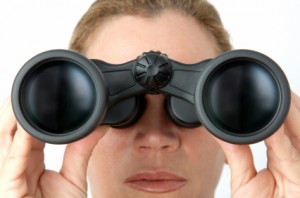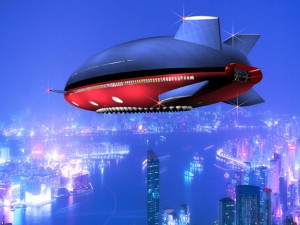 On this page, you will see a (Utopian?) vision of a better future; a future that has been enhanced because of our efforts to combat climate change and reduce greenhouse gases in the areas of:
On this page, you will see a (Utopian?) vision of a better future; a future that has been enhanced because of our efforts to combat climate change and reduce greenhouse gases in the areas of:
- Design
- Purpose
- Making it
- Using it
- After it’s used
- Lifestyle
- Transportation
- Private transportation
- Active transportation
- Public transportation
- Air travel
- Communities
Click a link in the list above to jump to that topic on this page.
For a more complete vision and plan for Winnipeg, check out Transition Winnipeg‘s Energy Descent Action Plan (EDAP) titled “Winnipeg’s Great Transition: Ideas and Actions for a Climate-resilient, Low-carbon City“.
The effects of climate change are happening already but the real changes are yet to come – and we’re not just talking about future changes to the climate. There are changes coming in our lifestyle as we work to reduce our greenhouse gas emissions and as we adapt to changes as they occur.
Many of the predictions in the impacts and the Why must we prevent a 2ºC rise? sections of this website are negative. But what if we really tackle this issue? What might the world look like?
Design
A change in design is at the heart of the solution.
The design criteria for most of today’s products (including our homes) seem to be simply: “How can it be made for the least monetary cost and sold for the highest monetary profit?” There are not enough resources in a finite world to sustain this approach.
Designs of the future will be simple and robust but with a practical elegance. They will be based on new criteria. Perhaps the criteria above could be restated: “How can it be made for the least total cost and sold for the highest global benefit?”
In the future, design questions will have to address the complete life-cycle of the product:
Purpose
- Is the thing necessary at all? What is its purpose?
- Is there something existing that can be modified to fill this new purpose?
- Could it be used to serve multiple purposes?
Making it
- How can it be made using the least amount of material and energy?
- Can it be made from material that is available locally?
- Can it be made from material that is easily replaced?
- Can the by-products from its manufacture be used?
Using it
- Does it require minimal energy and material to use?
- Is it durable?
- Is it easy to service so that it doesn’t have to be discarded if it breaks?
- Can the by-products from its use be used?
After it’s used
What happens to it after it has served its purpose?
Can it be reused for something else?
Can it be dismantled easily and all of the components recycled or reused?
Lifestyle
Let’s face it; the status quo is not perfect. There are many signs that the “dogged pursuit of the American Dream” has brought on an “epidemic of stress, overwork, shopping, and debt.” It has also brought on a “bloated, sluggish, and unfulfilled feeling that results from one’s efforts to keep up with the Joneses.” (1)
In the future, we will live more simply. This does not mean living in poverty and depravation. We will be more conscious of what we truly need to be happy and fulfilled. We will determine what is important, or “enough,” for us and seek that out – no more and no less.
Transportation
Private transportation
In the future, cars may look similar to today’s cars on the outside but there will be differences in how they are powered and used:
- Cars will be electric powered. This may not be the car’s only source of power but will propel it at least part of the time. (A typical gasoline-powered car produces more greenhouse gases than an electric car – even if the electric car gets its charge from a coal-fired electric power plant. Besides, we see very little electricity from coal in our ideal future.)
- People will engage in car-sharing programs.
- Workplaces will organize car-pool programs for people in areas not service by public transit.
- Many cars will be shared public property. They will be used like shopping carts at a supermarket are today. Pick an available one where you are and drop it at your destination.
- People will choose active and public transportation more than private transportation
Active transportation
Active transportation means walking, rollerblading, skateboarding and cycling to get where you want to go.
In the future
- More people will choose to use active transportation year-round
- There will be connected routes that will allow you to easily and safely ride from any point in the city to any destination
- Many of these routes will be exclusively for active transport or will be “quieted” (i.e. They will have all other traffic on them purposely reduced)
- All roads and bridges will be designed to facilitate active transportation with multiple, wide, designated corridors
- Traffic signals will be set with priority for active transport users
- All shops and workplaces will have secure, visible, well-lit, easily accessible, parking areas for bicycles
- All workplaces will have locker and shower facilities
- Our fitness will improve
- Health costs will go down
- Infrastructure maintenance and construction costs will go down as heavy traffic is reduced
- Our streets and roadways will become quieter and less dangerous, with less pollution smells and more room for greenery
- You will be able to rent bicycles cheaply and quickly from many locations in the city. (such as they do in Paris – see Velib)
See more on our Active transportation page.
Public transportation
In the future, public transportation will be seen as a far superior choice than a car to get to destinations like work, shopping, and entertainment:
- Buses will be clean, quiet, comfortable, and safe with good light to read by
- Your bus will come to your home to take you to work at the same time every morning (because you signed up and pay a monthly fee)
- Your beautiful bus will zoom past the poor car commuters who are stuck in traffic because you are in the bus-only express lane
- You will be able to cycle to a nearby bus hub and put your bike in a secure lockup or take it with you on the bus.
- The wait for your bus will be no more than three minutes because there are so many of them and they are so quick
- The bus’s wireless network will provide internet for your laptop and complimentary cell phone connection
- The bus will have a seat-back personal video system
NOTE: Public transit just like the above will also be available to get from rural community to rural community, and from the city to the country.
See more on our Public transportation page.
 Air travel
Air travel
In the future, air travel may be by airship. It may take a bit longer but you will have a better view as you go and you’ll have lots of room to move around and time to do work or relax as you travel.
For more on this vision, see the Air travel page on this site.
Communities
Many of today’s communities really aren’t communities at all. They are simply a means to supply customers in their cars to box mall shopping centres.
In the future, communities will
- Have more space devoted to people and their activities than to cars and their parking.
- Have abundant, interconnected, and useful walking and cycling paths
- Have more trees, shrubs, waterways, and plants.
- This will make them cooler places in summer and provide habitat for birds, animals, and insects.
- Be filled with fresh, sweet-smelling air
- Have small shops with all necessary shopping close to home
- Provide more opportunities for neighbours to interact with each other as they walk from place to place and meet in local shops and recreation facilities
- Have less crime because of this increase in connection between neighbours
See more on our Communities solutions pages.




